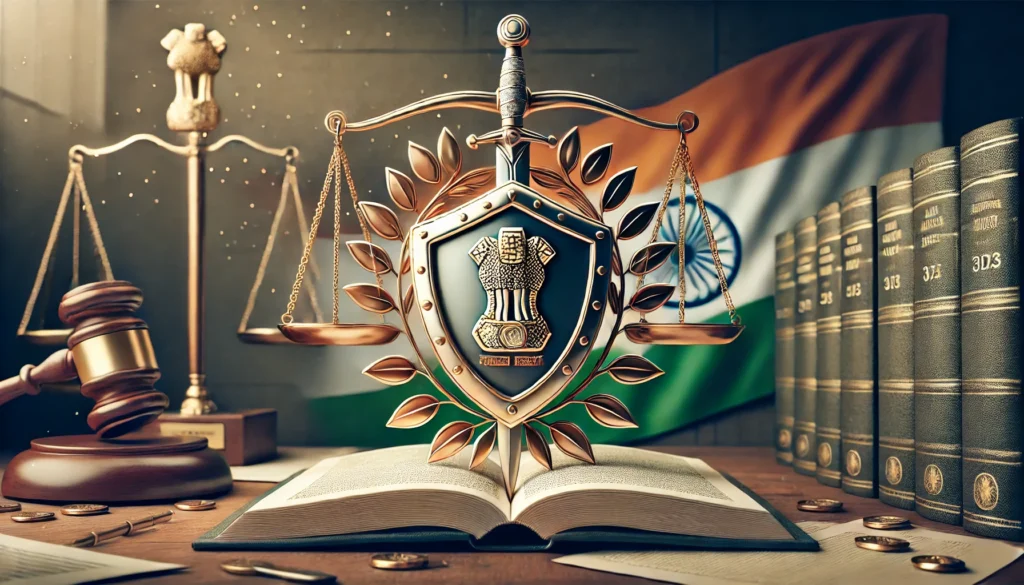Published On: 22nd February, 2024
BACKGROUND
The SR Bommai V. Union of India is a landmark judgment in the Indian constitutional law. Passed in 1994, the Supreme Court of India addressed the dismissal of the Karnataka state government led by Chief Minister S.R. Bommai. The case majorly dealt with the implementation of Article 356 of the Constitution of India. Article 356 deals with the imposition of the President’s rule in the state of India. Whenever a state was brought under the President’s rule, the elected government of that state would get dismissed and the administration would be directly conducted by the Governor of the State, who in turn was an appointee of the president and thus a functionary of the Union Government. However, the use of Article 356 was popularly controversial as it militates the democratic doctrine of sovereignty as an elected government was suspended also putting into damage the federal structure of the Indian political system of power sharing amongst the Union and the State government. In addition, it was used by the central governments repeatedly to suspend the state governments based on genuine or trumped-up excuses. Article 356 has been referred to as a “Dead letter of the Constitution” even by Mr. Bhimrao Ambedkar, the Chairman of the Drafting Committee of the Indian Constitution.
FACTS OF THE CASE
The judgment of the above mentioned landmark case was passed under the following circumstances:
KARNATAKA –
The Janata Party was the majority party in Karnataka and had formed government government under the leadership of S.R. Bommai. In September 1988, the Janata party and Lok Dal merged to form a new party ‘Janata Dal’.with an addition of 13 members in the ministry. However, within 2 days K.R. Molakery, a legislator of the Janata Dal defected from the party. He brought a letter purportedly signed by nineteen legislators renouncing their support for the ministry to Governor Pendekanti Venkatasubbaiah. However, on the very next day, seven out of such legislators complained that signatures on such letters were obtained by misrepresentation and affirmed their support to the ministry. The Governor was notified of the decision to call for an assembly by the Chief Minister and his Law Minister at their meeting with him that day. He also sent the President a telex message about the same. On the same day, however, the Governor again requested action under Article 356(1), reporting to the President that the Chief Minister had lost the support of the majority in the House. On the same day, the President issued the proclamation which was thereafter approved by the parliament required under Article 356(3). A writ petition was filed on 26 April 1989 challenging the validity of the proclamation.
MEGHALAYA:
On 11 October 1991, the President issued a proclamation under Article 356(1) dismissing the government of Meghalaya on the basis of a report from the governor and other information received by him that the situation had arisen in which the Government of the State could not be carried on in accordance with the provisions of the Constitution thus the Government was dismissed and the Assembly was dissolved accordingly.
MADHYA PRADESH, RAJASTHAN, AND HIMACHAL PRADESH
Owing to the demolition of the Babri masjid, communal riots spread out across the nation. The governments of Madhya Pradesh, Rajasthan, and Himachal Pradesh were dismissed. However, the validity of such proclamations was challenged in the respective high courts. The petition of Rajasthan and Himachal Pradesh stood withdrawn to the Supreme Court.
Since the questions in all of the aforementioned petitions were similar, the Honourable Supreme Court heard them all at once. The first week of October 1993 saw the start of the SR Bommai case arguments, which ended the last week of December 1993.
ISSUES RAISED IN COURT
The issues of this case can be broadly summarized as:
- Whether the President’s proclamation imposing President’s rule in a state under Article 356 is subject to judicial review, if so, under what circumstances can the court intervene to examine its validity?
- Whether the Governor’s discretion in sending a report to the President recommending the President’s rule absolute or is it subject to judicial review, especially when the material on which such report was based was found to be irrelevant or extraneous?
CONTENTIONS:
By the Appellant:
In the aforesaid landmark case, S.R. Bommai, who was then the chief minister of Karnataka, contested against the arbitrary imposition of the President’s rule in Karnataka under Article 356. He argued that the discretionary power vested with the Governor and the President should be exercised judiciously and not as a tool to cater to any political advancement of the ruling party in the center. He contended that even the proclamation of the President should be subject to judicial review so as to prevent its misuse, upholding the principles of federalism. The appellant sought the establishment of clear guidelines for the proper and limited use of Article 356 to protect the autonomy of the state governments.
By the Respondent:
In the S.R. Bommai v. Union of India case, the respondent, the Union of India, argued in favor of the discretionary power vested to the Governor and the President under Article 356. The Union contended that the executive’s authority to assess the breakdown of constitutional machinery in a state and to recommend the President’s rule was a matter of political judgment, not a subject to detailed judicial scrutiny. The Union emphasized the need for flexibility in handling situations threatening the Constitution and the court should not interfere with the discretionary powers of the executive in matters pertaining to national interest. Furthermore, the Union contended that the judicial intervention could undermine the urgent decisive action required during a time of crisis.
RATIO DECIDENDI
The ratio decidendi or the legal reasoning applicable to the case of S.R. Bommai v. Union of India underlines the fundamental constitutional principles of India. In this instance, the court decided that judicial review applies to the President’s Article 356 authority to remove a state administration. The court also established that such actions must be based on valid grounds, emphasizing the significance of constitutional morality and the federal structure. The ratio decidendi in cases revolving around the powers of the union and the state governments typically centers on interpreting and applying the constitutional provisions that delineate the powers and responsibilities of the Union and the State. The judiciary plays a pivotal role in interpreting and safeguarding these constitutional principles, contributing to the evolution of India’s constitutional jurisprudence.
JUDGMENT :
The Supreme Court of India delivered the historic judgment that significantly impacted the interpretation of Article 356 on 11th March 1994. The judgment authored by Justice J.S. Verma, established crucial principles regarding the exercise of discretionary power by the President to dismiss a state government. The court ruled that the power of the President under Article 356 is subject to judicial review. It also held that the proclamation of the President’s rule could be declared unconstitutional if it was found to be malafide, or if there was no material supporting the President’s contention that the state government should not carry out as per constitutional provisions.
The court emphasized using the power under Article 356 to be used as a last resort when all other alternatives are exhausted. The judgment laid down guidelines to ensure that the power is exercised cautiously, respecting the democratic mandate of the elected state governments.
CONCLUSION:
In the landmark judgment of the S.R. Bommai V Union of India, the Supreme Court held that there must be judicial precision while exercising the power to dismiss the state governments. It must not be done arbitrarily, emphasizing the need for valid and relevant material, not on the basis of extraneous considerations. The judgment reinforced the fact that the dismissal of a state government must be done as a measure of last resort when no other alternative was left.
In conclusion, the landmark judgment of S.R. Bommai V Union of India played a crucial role in maintaining the strong foundation of federalism, democracy, and constitutionalism in India, ensuring the use of Article 356 was under the purview of judicial review.
REFERENCES
1.https://en.wikipedia.org/wiki/S._R._Bommai_v._Union_of_India
2.https://indiankanoon.org/doc/60799/
3.https://main.sci.gov.in/judgment/judis/11570.pdf
4.https://www.legalserviceindia.com/legal/article-6253-s-r-bommai-v-s-union-of-india.html




